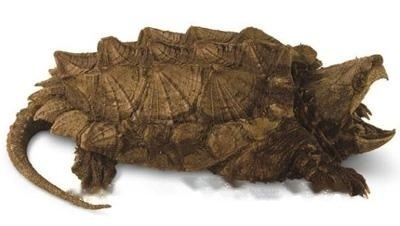
Snapping turtle
Real snapping turtles look like crocodiles fish, Set turtle and crocodile in one, so called true snapping turtle. Its head is relatively thick and cannot be completely retracted in
Aldabra giant tortoise was named after the discovery of the island of Aldabra, It is a very large tortoise species, many tortoise friends will try Breeding such an expensive breed comes with certain risks, as it is likely to outlive you, eat a lot, and grow in size.
Chinese name: Aldabra giant tortoise
Two names: Geochelone gigantean
English name: Dipsochelys dussumieri
Boundary: Animalia
Department: Chordate
Class: Reptiles
Order: Turtles
Suborder: Curly-necked turtles Suborder
Family: Tortoise
Genus: Elephantine
Species: Aldabra tortoise
Distribution: Western Indian Ocean , Aldabra Island.
Appearance: The Aldabra elephant has a large glans and a long neck. The center of the carapace is high, and the vertebral shield is 5 pieces; the costal shield is 4 pieces on each side; the marginal shield is 9 pieces on each side, and the front and rear edges are slightly serrated and slightly raised; the neck shield is 1 piece; the hip shield is single piece, larger.
Living habits: The Abeldara tortoise is very adaptable to the artificial breeding environment. Its food is similar to that of the leopard tortoise and sulcata. It can accept any plant food and has a mild personality. But keeping such a behemoth must have enough space planning.
Reproductive habits: Oviparous, each litter can lay 12-14 eggs. Oviparous. Female turtles can lay 9-25 tennis ball-sized eggs, which hatch in about 98-200 days.
Diet: Plant-based food, and sometimes dead animals.
Conservation status: The Aldabra giant tortoise belongs to the conservation category of CITESII.
Price: Aldabra tortoises are the best in the price of tortoises, and the price of seedlings is above 1.5W, but it is believed that with the increase in the number of human breeding, the market demand decreases, Yada's prices won't always be this expensive.
Aldabra tortoises are large tortoisesbreeds, generally speaking, Aldabra giant tortoises are not suitable for keeping in cities because Its area is really large, and it is not particularly easy to raise. The appearance of the Aldabra tortoise gives people the feeling that it is the fattened and enlarged size of the general tortoise.
The Aldabra giant tortoise has a high, rounded carapace that is brown or tan in color. Its legs are strong and capable of supporting its heavy body. The Aldabra elephant had a large glans head and a long neck. The center of the carapace is high, and the vertebral shield is 5 pieces; the costal shield is 4 pieces on each side; the marginal shield is 9 pieces on each side, and the front and rear edges are slightly serrated and slightly raised; the neck shield is 1 piece; the hip shield is single piece, larger. Limbs stout, columnar. The carapace, limbs, head and tail are all blue-black, and each vertebral shield and rib shield have irregular dark spots, and the skin is loose and wrinkled.
The neck of the Aldabra giant tortoise is very long and can even be extended to facilitate its feeding on branches that are one meter above the ground. This tortoise, like the Galapagos giant tortoise (details), is known for its size. Its carapace can reach an average length of 120 cm (47 inches). The average male weight is about 250 kg (550 lb). A male at the Fort Worth Zoo weighed more than 360.25 kg (794.2 lb). Females are generally smaller than males, with an average length of about 90 cm (35 in) and an average weight of 150 kg (330 lb). The Aldabra tortoise is the second largest tortoise in the world, after the Galapagos tortoise.
The main food is plants and sometimes dead animals. The maximum form is 105 cm long. The body shape is second only to the elephant tortoise, and the nostrils are longitudinally elongated. Widespread in the land area of Aldabra Island. Each litter can produce 12-14 eggs. Oviparous. Female turtles can lay 9-25 tennis ball-sized eggs, which hatch in about 98-200 days.
Alberdara tortoises are very adaptable to the artificial breeding environment. Their food is similar to that of leopard tortoises and sulcatas. They can accept any plant food and have a mild personality. But keeping such a behemoth must have enough space planning.
Aldabra tortoises are usually herbivorous turtles. Eating the branches and leaves of some plants raw, tall people and long necks provide convenience for them, and can guarantee to eat some relatively high food. At the same time, this is also a kind of turtle that can travel long distances for food, very perseverance.
Aldabra tortoises are herbivores, eating grass, leaves, and stems of woody plants, but sometimes small invertebrates, carrion, and occasionally the carcass of dead tortoises. In captivity, Aldabra giant tortoises will eat more fruits, such as apples, bananas, and compressed vegetable grains. Since there is very little fresh water for turtles to drink in their natural habitat, they get most of their body water from food.
Aldabra tortoises have two main types of shells. When the food provided by the habitat is mainly obtained on the ground, the shell on the neck will be dome-shaped with the neck stone extending downward. In habitats where food is primarily obtained at higher levels, the top shell is flatter to allow the neck to extend freely upward for feeding. In daily feeding, the management and feeding of turtles require managers to be serious, careful and cautious, check the turtle's activities, eating, and feces every day, and keep a diary. Separate unhealthy turtles in time and keep them in isolation.